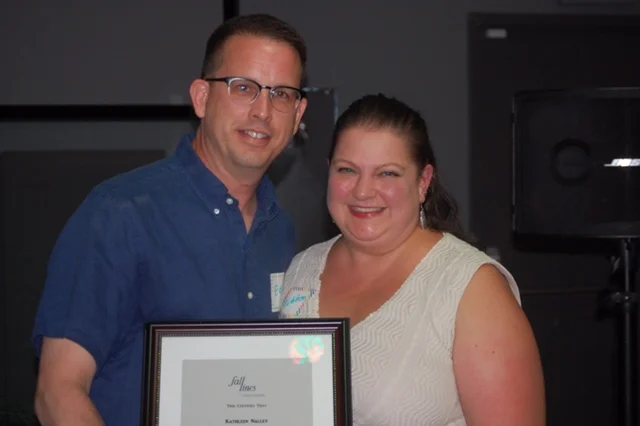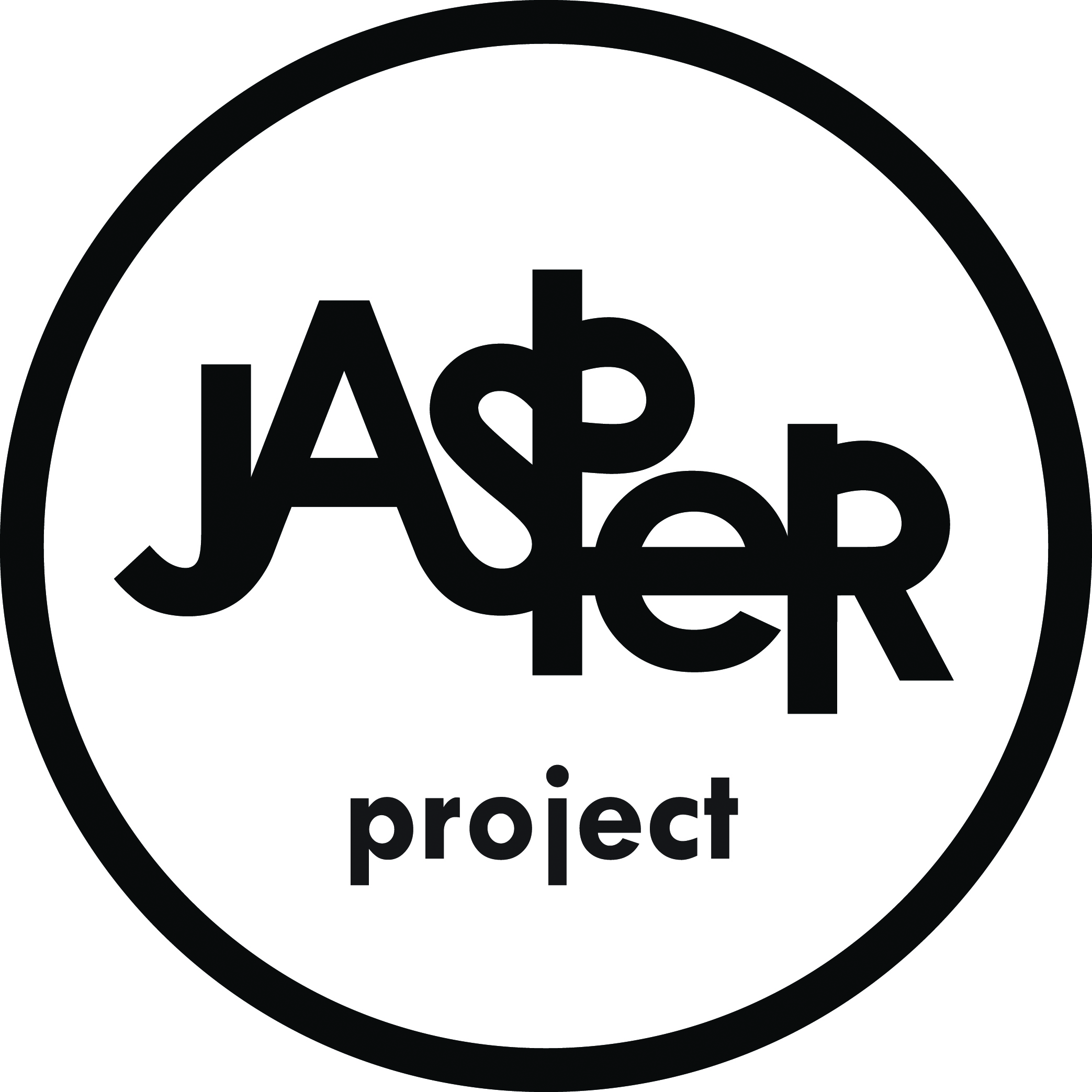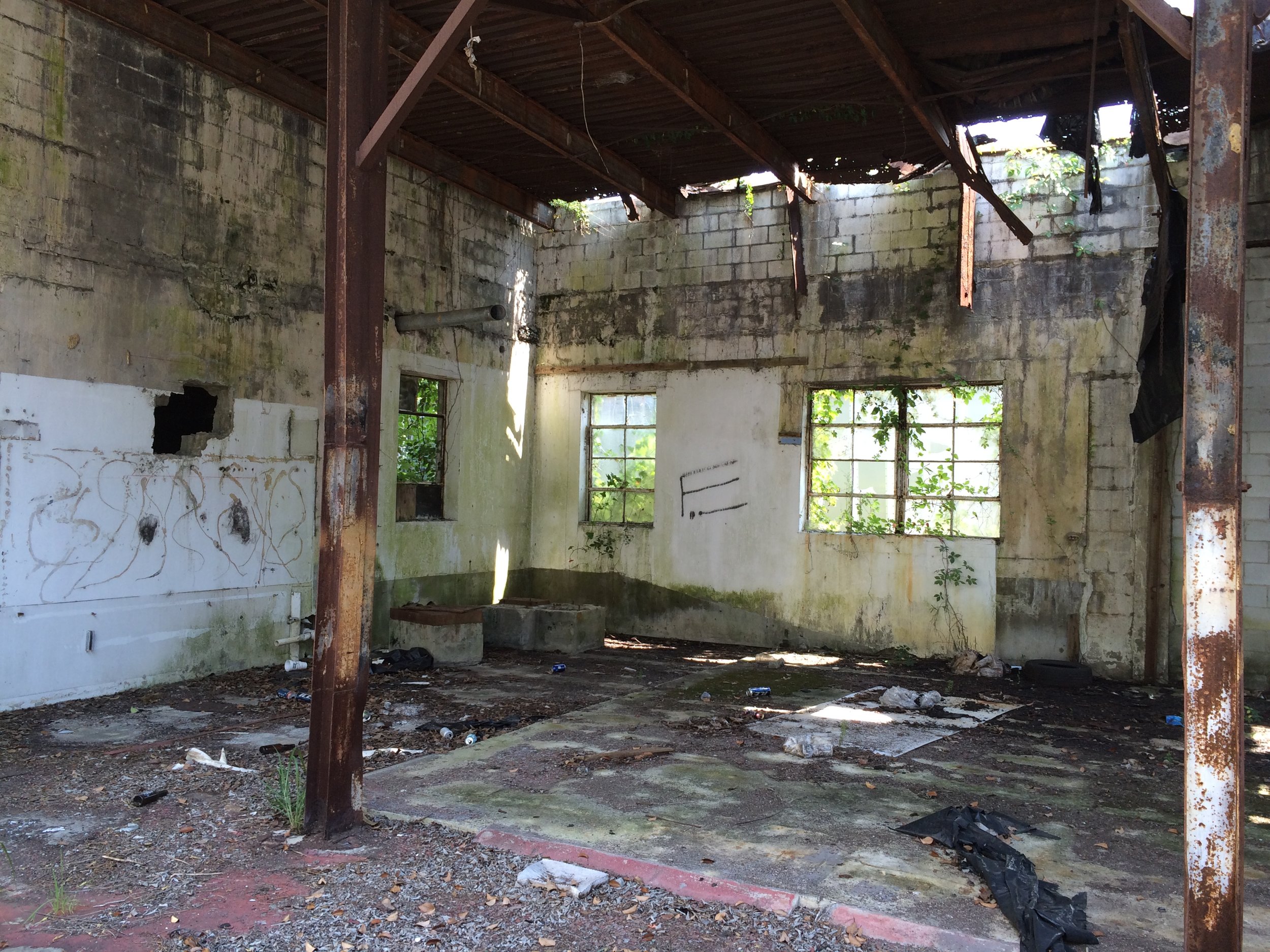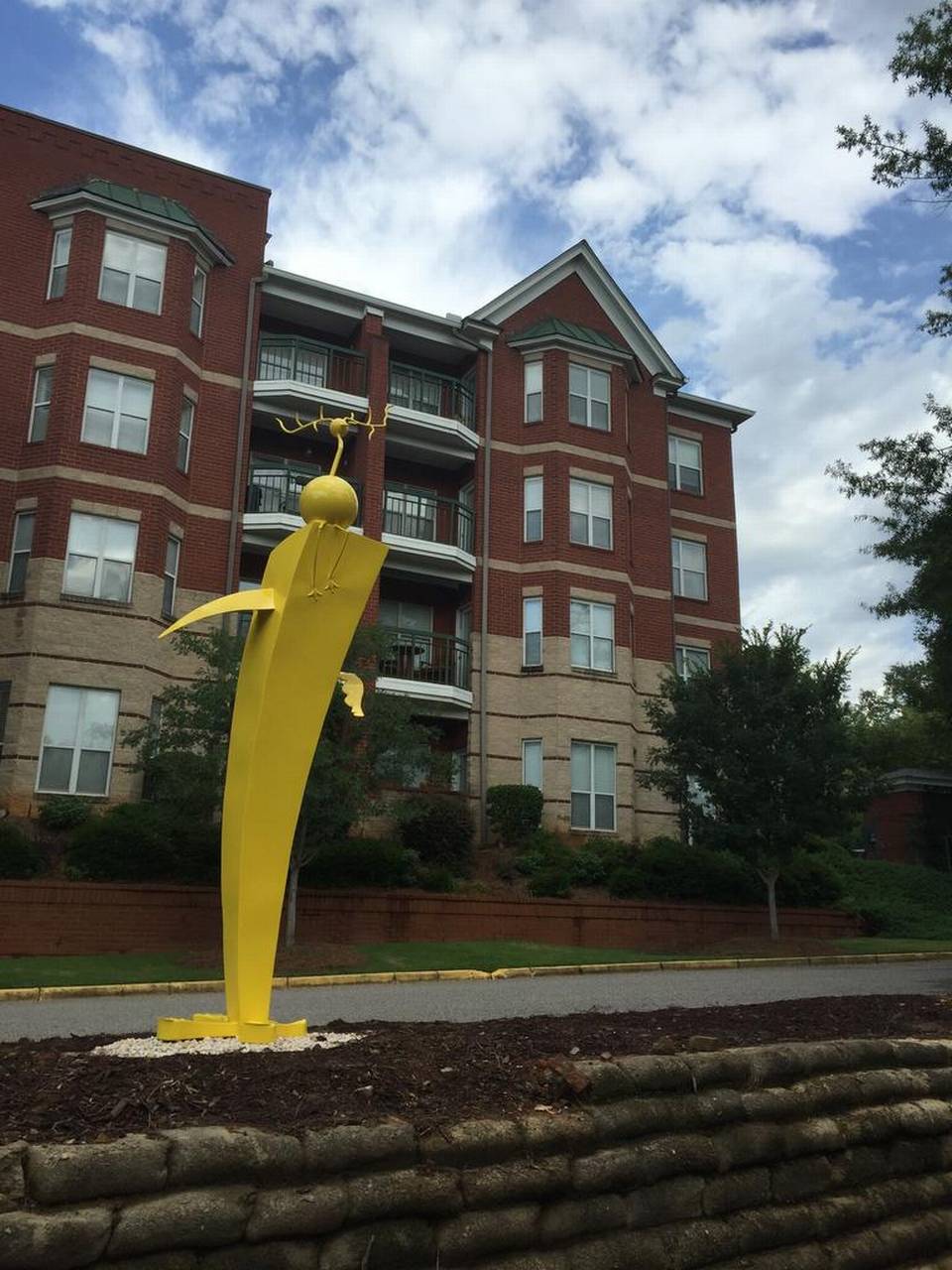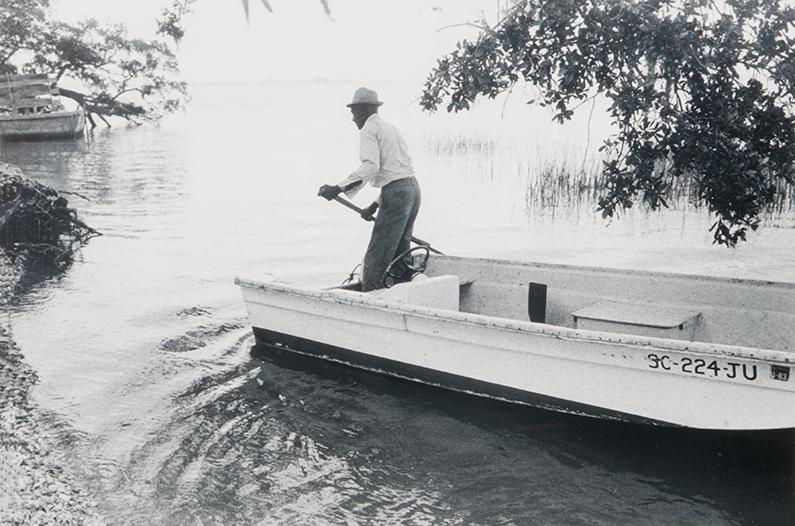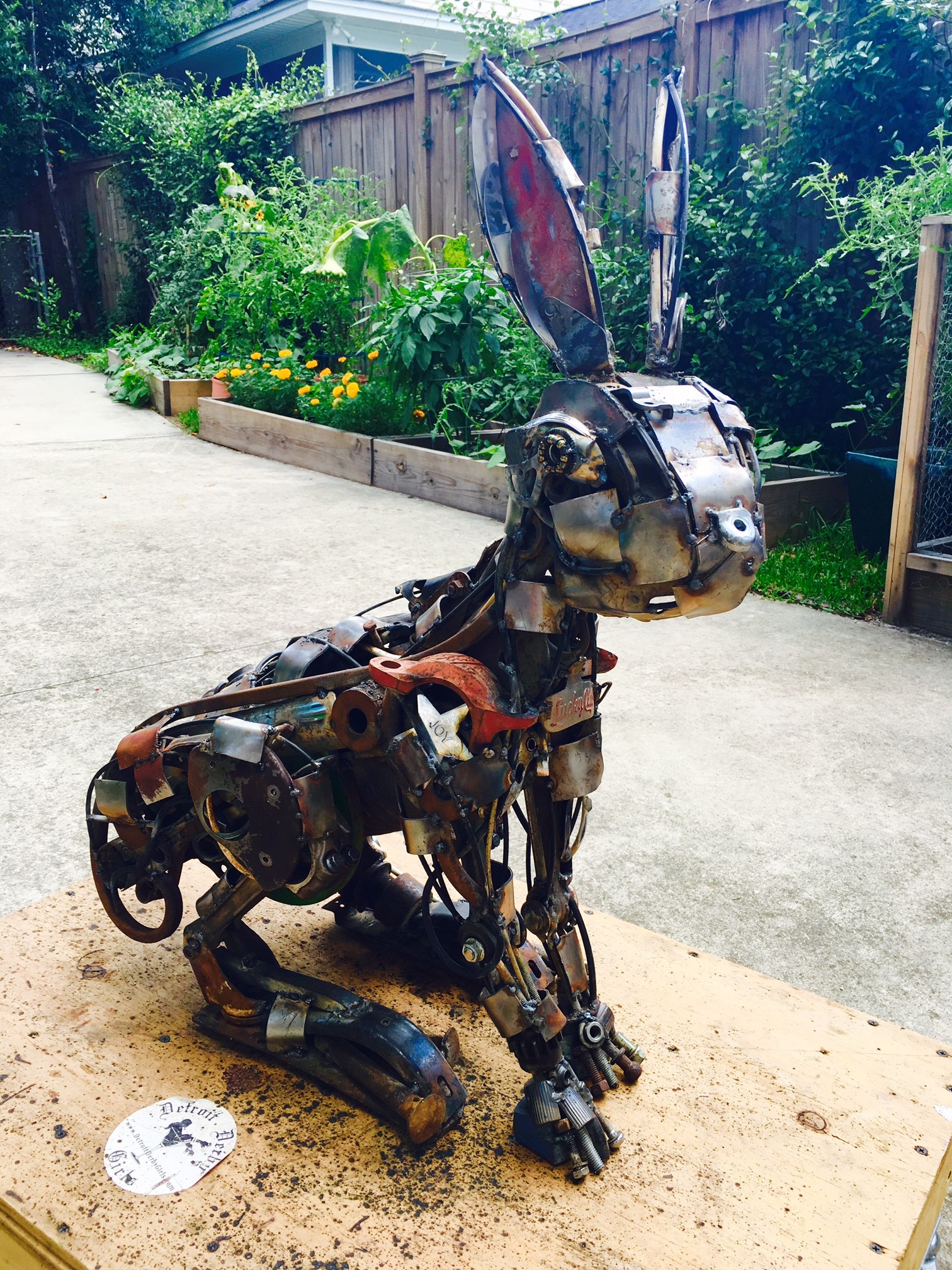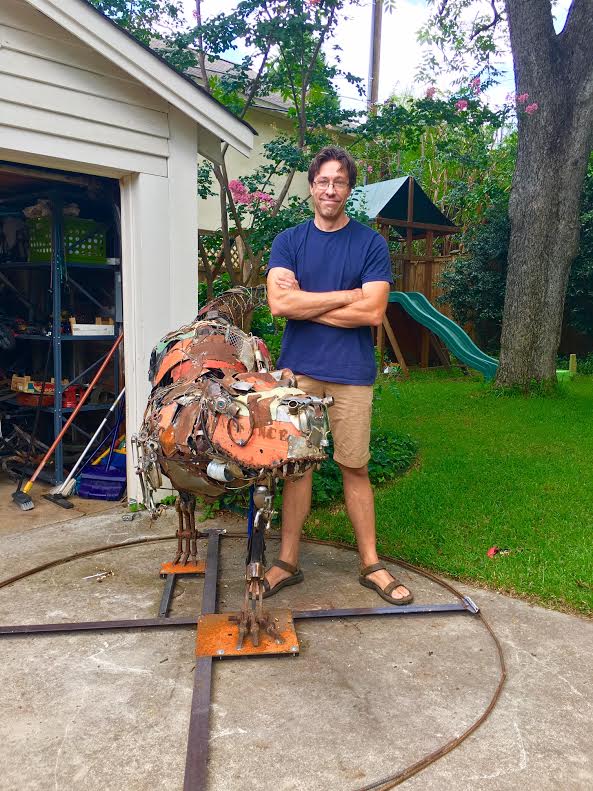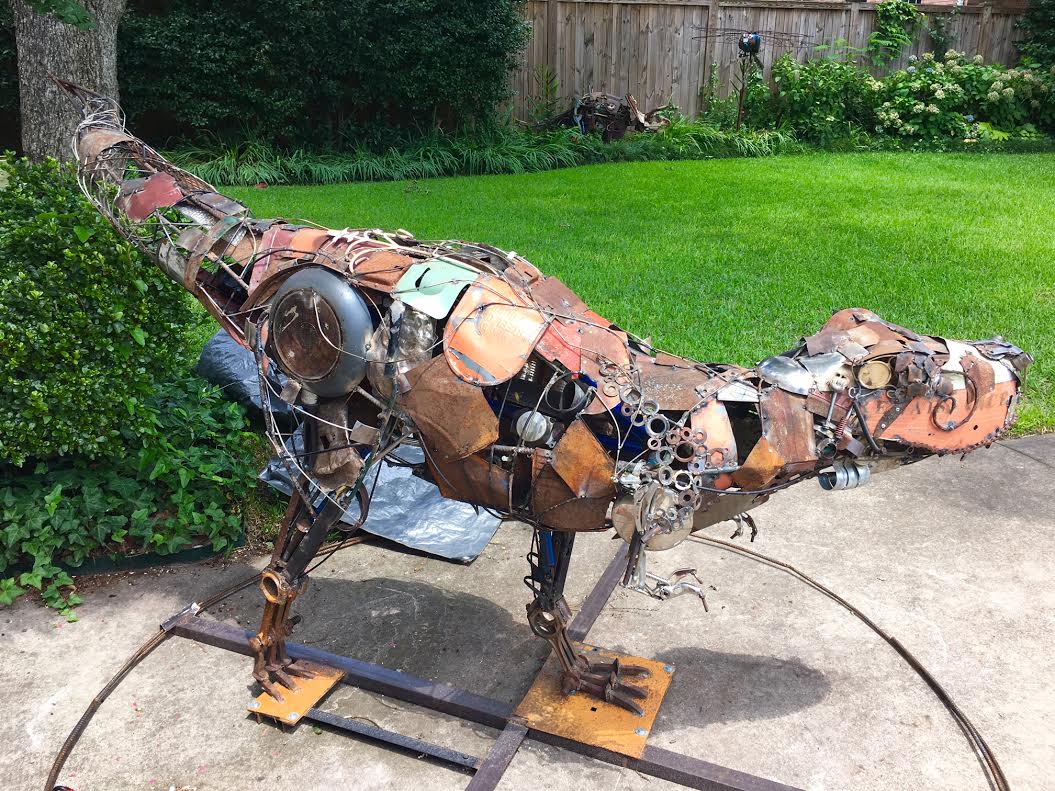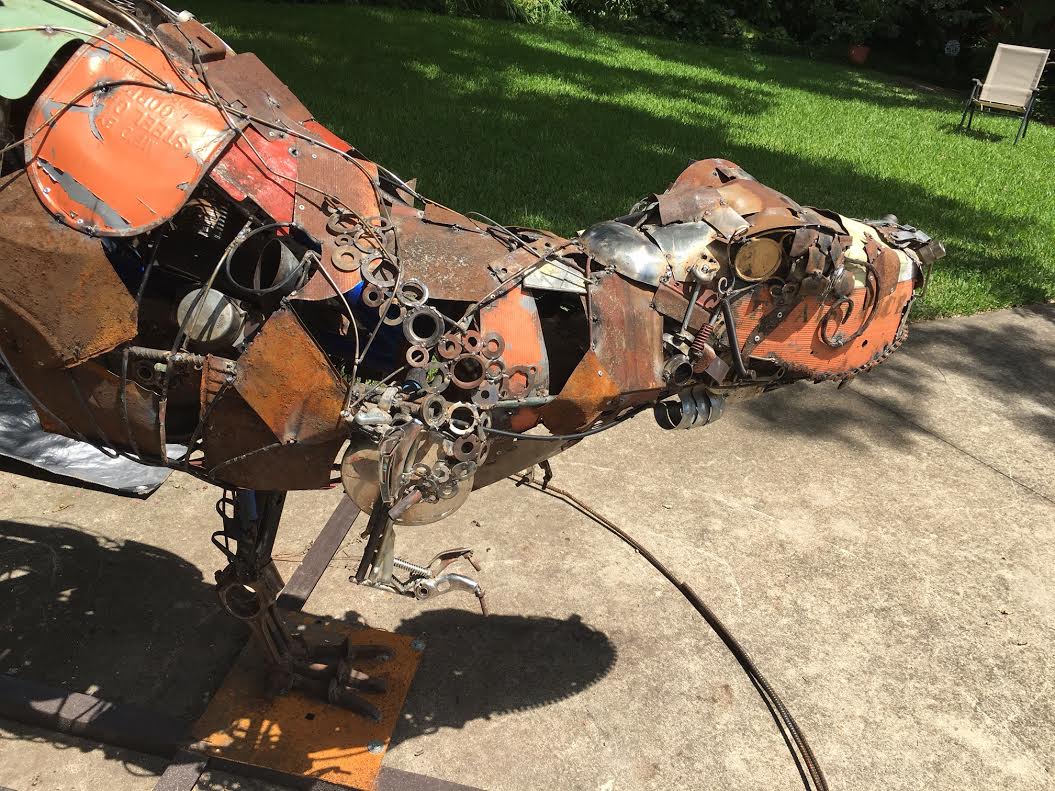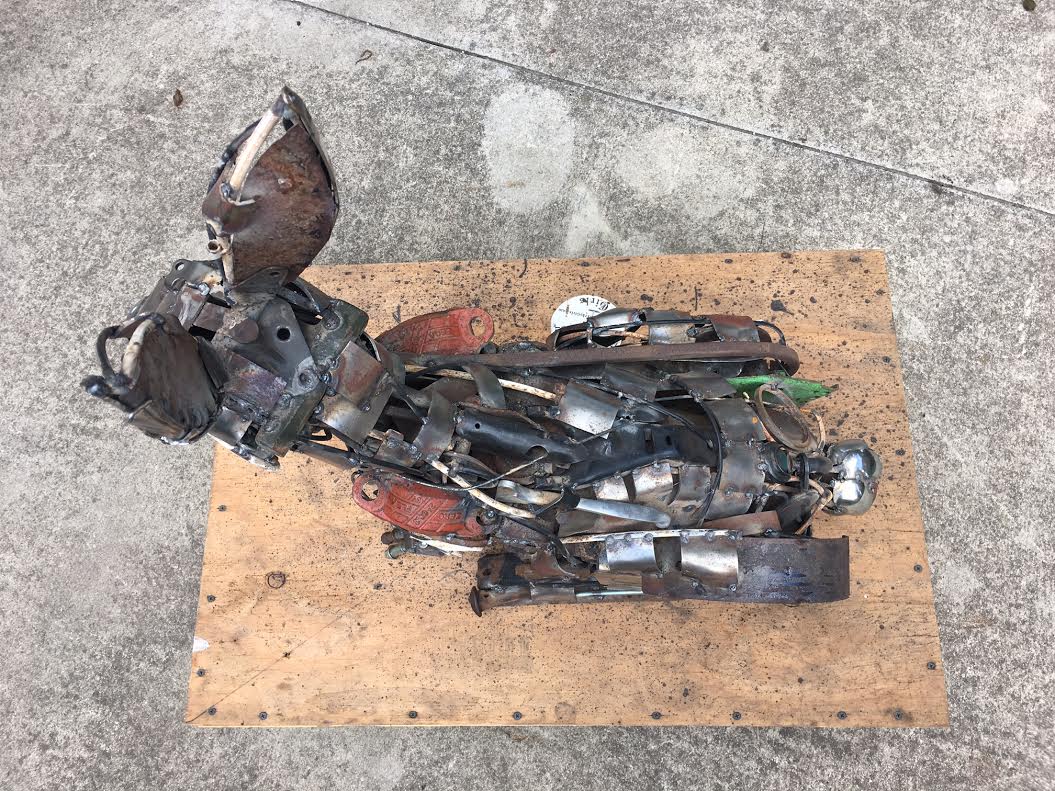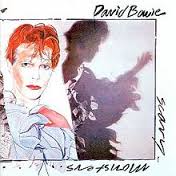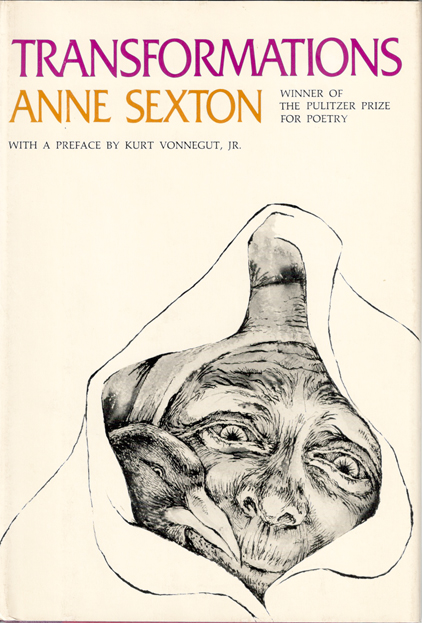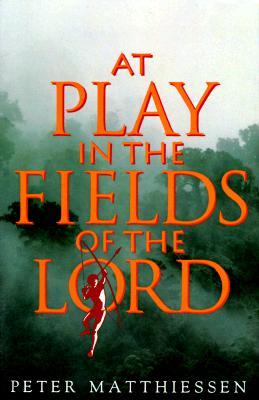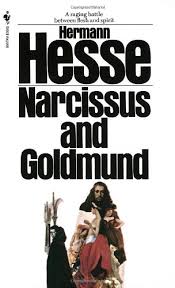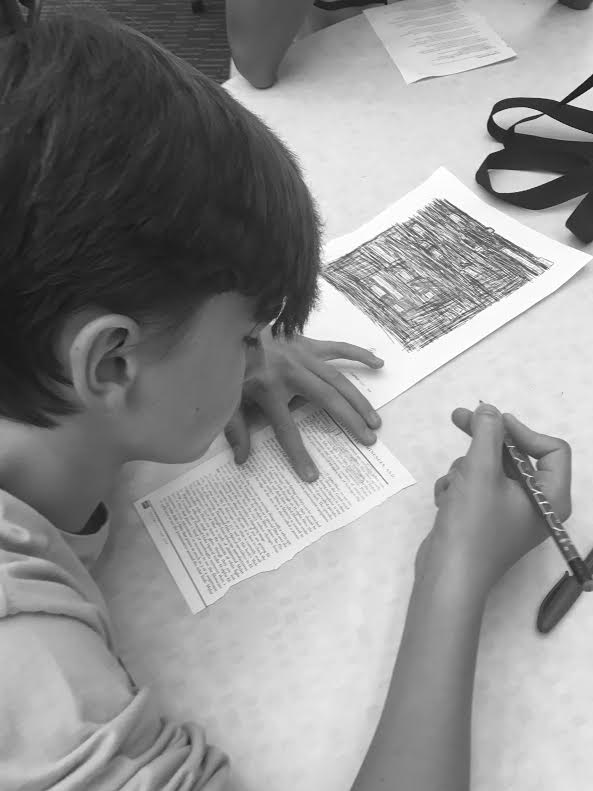Fall Lines 2016 Award Winners Announced (& Photos!)
Congratulations to Selected Contributors to
Fall Lines - a literary convergence, Volume III
and Prize Winners
Claire Kemp - Winner of the Broad River Prize for Prose
Claire Kemp's short fiction, The Doll Maker, was selected from finalists by award winning, Columbia-based author Julia Elliott.
Kathleen Nalley - Winner of the Saluda River Prize for Poetry
Kathleen Nalley's poem, The last man on the moon, was selected from finalists by South Carolina Poet Laureate Marjory Wentworth.
~~~
Contributors' work selected or invited from more than 300 entries include:
Leah Angstman
Al Black
Julie E. Bloemeke
Laurel Blossom
Davi Travis Bland
Mark Burns
Jonathan Butler
Scott Chalupa
Tim Conroy
Ron Cooper
Pam Durban
Phillip Gardner
Terrance Hayes
Claire Kemp
Michael Miller
Tamara Miles
Patricia Moore-Pastides
Kathleen Nalley
Matthew O'Leary
Frances Pearce
Bo Petersen
Andrew Plant
Ron Rash
Mark Rodehorst
Eileen Scharenbroch
Maggie Schein
Randy Spencer
Additional photos:
Sincerest appreciation to Tapp’s Arts Center, Jonathan & Lorene Haupt, Sara June Goldstein, Bert Easter, One Columbia for Arts & History, Richland Library, Friends of Richland Library, South Carolina Academy of Authors, University of South Carolina Press, Muddy Ford Press, Columbia Museum of Art, SC Philharmonic, Rosewood Art & Music Festival, Deckle Edge Literary Festival,Lee Snelgrove, Annie Boiter-Jolley
photos by Bob Jolley & Julie Bloemeke
Summer 6s - with Franklin Jones and Post-Echo
It’s summer in the city and sometimes during this time of year we find ourselves with the weird sensation of (gasp!) free time on our hands. Rather than letting this phenomenon catch you unawares on some stray Saturday afternoon, Jasper has you covered with our summertime series alliteratively called the Summer Sixes in which we ask members of the Columbia arts community to share their favorite top 6 films, reads, albums, or TV series binges. We’ll be bringing you this throughout the summer so pay attention to What Jasper Said to learn more about what your friends and neighbors like to do with their spare time, and maybe get some ideas of what to do with yours.
If you know the folks over at Post-Echo at all, it won't surprise you that they took a strange and unexpected tact when we requested a Summer 7 list from them. Franklin Jones compiled his six favorite abandoned places in the Midlands, many of which are featured in the collective's films Passage and their latest, Tyler Digital visual album Exit 8.
---
‘Tis the season for exploration. So resolve your deepest abandonment issues and hit the road this summer in search of these six nearby abandoned places. In the spirit of proximity, I have not included any sites further than sixty miles away; the endless array of ruinous coastal eye candy will have to wait for a separate list. Also, please remember to be careful. Just because somewhere is abandoned, does not mean you are alone.
- Lone Star, SC
Once a bustling community during the heyday of the now-defunct Atlantic Coast Line Railroad, the ghost town of Lone Star has been dormant for quite awhile. The remnants of its downtown area, however, feature four gorgeously dilapidated buildings: a general store, a post office, a freight depot, and what appears to have been an old hotel. Coincidentally, the railroad line (owned by CSX Transporation since 1986) still passes through Lone Star on occasion. Side note: be careful trying to access any of the structures as the wasp nests are plentiful.
- Olar, SC
While not quite a ghost town, Olar’s population is 212 and plummeting at the rate of 10% per decade- so, just be patient. A haven of forgotten banks, service stations, and general stores, Olar was once a popular whistle-stop on the Seaboard Air Line Railway (aka Route of Courteous Service, also the rival to Lone Star’s Atlantic Coast Line Railroad, got all that?). Unlike Lone Star, an uneasy sense of failure and despair hangs over the dregs of Olar. This hasn’t been a quick death.
- Chem Trails - Columbia, SC
The Intertape Polymer Group officially pulled up stakes several years ago, moving their packaging plant from the South Beltline location (where it had resided for over 50 years) to a state-of-the-art facility in Blythewood. What was left in the wake of this mass exodus amounts to nothing short of an apocalyptic nightmare. A decrepit maze of soul-sucking office corridors, hastily evacuated laboratories and cavernous testing facilities, all somewhere in the process of being reclaimed by outside vegetation. Even after years of corrosive decay, most of the workstations and cubicles are still intact - in addition to post-it reminders and lab notes, you can also find styrofoam to-go food boxes inside the break room fridge. There’s a little something for everyone here.
- The Wreck Center - Kershaw, SC
Formerly Flat Creek Park, you can find this sprawling behemoth just off Kershaw Highway en route to Forty Acre Rock. Details are scarce (or at least hard for me to find) on what exactly happened to this former parks & rec facility, but the sheer scope of abandonment on display is staggering. Comprised of a gymnasium, an arts/crafts building, two baseball fields, and what appears to be a dungeon of some kind, all scattered across a quarter mile of high grass and cacti (yes, cacti), there’s a lot to experience here so be sure to pack a lunch.
- The Locker Room - Hopkins (maybe?), SC
Also affectionately known as the Circuit Cell in tribute to its rusty exposed wiring, The Locker Room lurks just off Highway 378 next to a formerly abandoned gas station and a now-abandoned Hot Sub Shop (which itself was formerly a Subway). A short-lived bar and grill that met a fiery end, nearby locals have provided me with conflicting information over the years on just what happened to the Locker Room. With stories ranging from arson to the aforementioned faulty wiring, the origins of the inferno remain a mystery. As it stands now, the Locker Room is an immense husk of grimey, moss-laden concrete, its interior scattered with remnants that survived the blaze. You can actually still access this structure through the front door - but, to fully experience the Locker Room in all its opulent decay, I recommend entering via the gaping cinder block hole located at the back of the building.
- The Ruins - Columbia, SC
The full breadth of The Ruins is difficult to quantify. Tucked away deep off Bluff Road and surrounded by swamps and farmland, this monolithic structure operated as an Eisenhower-era seed repository before heightened industrialization rendered it obsolete. In the years since, the roofless concrete framework has developed a dense canopy of foliage, currently teeming with wildlife. Additionally, the architectural design of the structure has allowed each of its five compartments to accommodate individualized ecosystems, each different than the last. This is a very special place.
Honorable Mention: The Dead Pool - Columbia, SC
This one really flies under the radar. Located behind Columbia’s historic 701 Whaley building are the crumbling remnants of an indoor pool and gymnasium, approximately sixty years old. The gym was briefly re-purposed as a machine shop before being abandoned several years ago when renovations were announced. However, the real gem to discover is the adjacent pool structure. Truly something to behold, the Dead Pool is anything but lifeless- as a collapsed roof has yielded the necessary conditions for an assortment of plant life to thrive unabated, slowly consuming the interior of the tile structure.
New Sculpture in the Vista by Lander University Artist Doug McAbee
""Curtis & Bob represent the people and the state I know and love.” -- Doug McAbee, artist
The Vista Guild is proud to announce its most recent public art sculpture installation, a 12-foot-tall, powder-coated steel sculpture by artist Doug McAbee titled, “Curtis & Bob.”
The sculpture is at the Taylor Street entrance to the tunnel adjacent to Finlay Park, which opened July 13 after completion of Phase II of construction. The eye-catching yellow sculpture adds to the list of Vista Guild-commissioned public art pieces and is whimsical and approachable, according to the artist. The sculpture also follows McAbee’s current body of work, which utilizes humor with formal and conceptual qualities to create a visual conversation with the viewer.
“Curtis, the taller figure, may signify the Columbia or the state of South Carolina historically as we have risen with strength and technology again and again throughout our past,” said McAbee, a graduate of Winthrop University who is also an assistant professor of art at Lander University. “Bob sits high up on Curtis’ shoulders proudly looking toward the future. These two pals, though very different in appearance, work together in partnership to accomplish their goals. Curtis & Bob represent the people and the state I know and love.”
The Vista Guild has worked diligently to fund, support, commission and install public art sculpture in recent years. With “Curtis & Bob,” the Vista now has five sculptures throughout the neighborhood. This commitment is part of the reason the South Carolina Arts Commission recently named the Vista an official South Carolina Cultural District.
“The Vista as we know it today is rooted in galleries and artists and we’re pleased to be able to add even more character to the neighborhood with the addition of Curtis & Bob. The sculpture is cheerful and adds to the fabric of its urban surroundings,” said Meredith Atkinson, executive director of the Vista Guild. “Our board is dedicated to keeping the history of the neighborhood and the arts front and center with every decision we make, and we look forward to adding even more public art to the Vista.”
One Columbia for Arts and History aided the Vista Guild with logistics and communications in the installation process. "It has been a privilege to work with the Vista Guild, Doug McAbee and the City of Columbia to install another piece of public art. Sculptures like ‘Curtis & Bob’ continue to enhance the uniqueness and artistic talent of the Vista, Columbia's first recognized cultural district, but also physically represent how Columbia is a hub of creativity," said Lee Snelgrove, executive director of One Columbia.
Deadline is August 26th! CALL for Nominations - JASPER ARTISTS OF THE YEAR 2016
THE
&
Jasper Magazine
Announce the CALL for Nominations for the Title
“Jasper Artist of the Year”
in each of the following categories:
Dance
Theatre
Music
Visual Arts
Literary Arts
Individual Artists, 18 and older, working in the greater Columbia arts community are eligible for the title
based ONLY upon their artistic accomplishments during the period from
August 26, 2015 until August 26, 2016.
~~~
IMPORTANT STUFF:
Nominations should be sent to JasperProjectColumbia@gmail.com
with the subject heading “JAY”
and MUST be accompanied by:
- The category in which the nominee should be considered.
- A list of work produced or performed during the designated time period. (No paragraphs. No forthcoming work. No stories of awesomeness.)
- The nominee’s complete contact info and a statement confirming that the individual has consented to be nominated.
Nominations must be received online by midnight August 26th, 2016. *
Finalists will be announced in the September issue of Jasper Magazine and winners will be announced at the JAY Gala in November – details to come.
Upon closing of the nomination call, a panel of judges will select the top three candidates in each field, and the public will be invited to vote online for their top choices.
Fine Print:
The category Dance includes: performance, choreography, or direction of any form of dance including, but not limited to ballet, contemporary, jazz, tap, ballroom, folk, or dance-based performance art.
The category Theatre includes: directing or acting in one or more local performances.
The category Music includes: conducting, directing, writing, or performing any style of music in one or more local concerts or recordings; both individuals and groups are eligible.
The category Visual Arts includes: the completion and presentation of any form of non-performing or non-literary arts, such as painting, sculpture, ceramics, photography, print-making, mixed-media, etc.
The category Literary Arts includes: the completion, publication, and/or presentation of any form of prose, poetry, or non-fiction writing, as well as playwriting and the writing of executed screenplays.
Only individual artists may be considered for nomination. While arts groups, such as musical groups or arts troupes, are no longer eligible for consideration, individuals within those groups may be nominated.
Jasper 2016 Artist of the Year Awards will not be awarded based on achievements accomplished prior to August 26, 2015. The purpose of the awards is to recognize artistic achievements accomplished within a calendar year.
There is no fee to enter.
Artists may nominate themselves.
Artists must be made aware of their nomination and agree to participate in the competition.
* Failure to comply with these rules will result in disqualification of the potential nominee.
THE DAUFUSKIE ISLAND EXHIBIT at CMA -- BY OLIVIA MORRIS
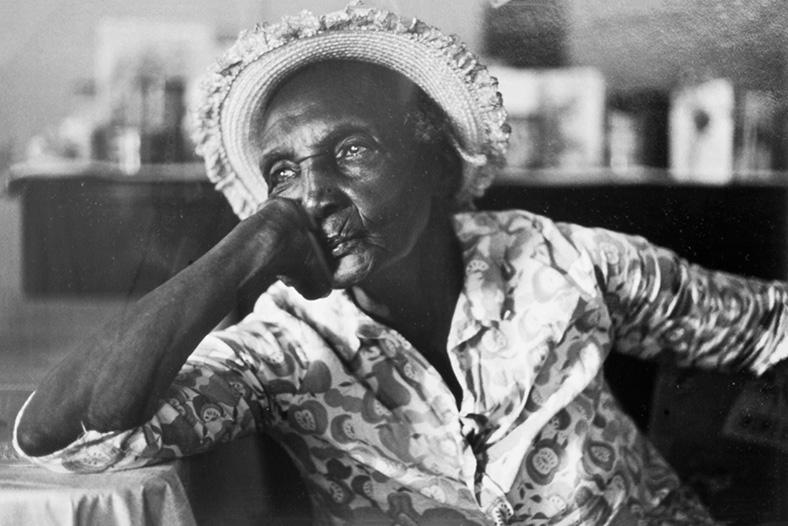 The Columbia Museum of Art is currently displaying "Daufuskie Memories", an exhibition of photographs by Jeanne Moutoussamy-Ashe, being shown until August 7. Through the late 70s and early 80s, Moutoussamy-Ashe explored the people, customs, and buildings of Daufuskie Island, a sea island off the coast of South Carolina. The series is comprised entirely of black-and-white gelatin silver prints.
The Columbia Museum of Art is currently displaying "Daufuskie Memories", an exhibition of photographs by Jeanne Moutoussamy-Ashe, being shown until August 7. Through the late 70s and early 80s, Moutoussamy-Ashe explored the people, customs, and buildings of Daufuskie Island, a sea island off the coast of South Carolina. The series is comprised entirely of black-and-white gelatin silver prints.
The island is famous for its rich preservation of Gullah as result of its tight-knit community and isolation from the mainland. Gullah is a culture and language developing from the descendants of enslaved Africans in the Lowcountry region, a fusion of Africa and the English South. In "Emily's Son at Nursery School During Naptime", a young boy is sprawled out on a mat beneath a stove. Hung up behind the stove is a sheet that reads, "moja — 1 // mbili — 2 // tatu — 3," and continues to ten. The words are numbers in Swahili. The stove is also labeled "stove", this time in English. On the other side of the room, propped against the wall, is a Dr. Seuss-themed corn-hole board. The Daufuskie islanders are suspended between two worlds, yet still largely separate, wedged between the stove and the wall.
The photos display a wide range of activities, each with its own motion, emotion, and composition of light. "Shrimper Pulling in his Line" shows a young man at work, dressed in a striped shirt and a bucket hat, pulling a net onboard a ship. Fishing was the nucleus of the island, a staple at the dinner table and the main sector of the economy. The island was also deeply religious, and home to the First Union African Baptist Church. Several photos — of weddings, young piano players, a woman fixing her daughter's shoes — feature the starkly white, thin-pillared church. The western influence on faith becomes undeniable in "Susie Standing Next to a Holy Picture", where a woman tightly smiles next to a picture of an unrealistically Caucasian Jesus.
There are pictures of people at funerals, on oxcarts, and drawing water from cast iron hand pumps. There are scenes of boats in winter, of children buried in each other's arms. However, the vast number of photographs are of just of people — mid-sentence, smoking cigarettes, gazing deeply back at the viewer. Moutoussamy-Ashe emphasizes the roles of both human interaction and solitude throughout her collection, reminding the viewer that everyone is so much more than a single action the camera catches them in.
Moutoussamy-Ashe captures these lives in an incredible transition and tragic disintegration. In the early 60s, Daufuskie islanders started to sell their land to private corporations and disperse throughout the mainland. Moutoussamy-Ashe caught the last historical glimpses of the island before it became known for its 20-hole golf course and its members-only residential club. The photographs hold a spirit and landscape that has been widely gentrified in the 21st century. The photographer herself spoke on the subject, "because the Daufuskie I photographed no longer exist, I know now that these photos are an invaluable archive for the islanders and greater American society."
Call to Photographers
Atlanta Photography Group is now taking submissions for one of APG’s premiere exhibitions, "Arnika Dawkins Selects"
Juror Arnika Dawkins will pick her selects from a national call for submissions. This exhibition will be part of Atlanta Celebrates Photography, the month-long, citywide photography festival and featured in the Festival Guide.
TWO AWARDS: APG PRINT PURCHASE PROGRAM
In conjunction with SELECTS, two artists may be selected for the permanent collection of the Museum Of Contemporary Art of Georgia as well as an award $500 each.
JUROR: ARNIKA DAWKINS
Juror Anika Dawkins is the owner of her eponymous fine art photography gallery established in Atlanta in 2011. The gallerist shows work by talented emerging and mid-career artists with a specialization in showing fine art photography by African Americans and images of African Americans. Active as a leader in the Atlanta arts community and avid collector, she is fine art photographer as well.
Deadline for entries is August 21. Show runs Oct 7 – Nov 12
For more information or to enter:
http://www.
Call to Authors - Deadline 8/11/16
Call to Midlands Writers and Poets
Jasper is looking for poetry and/or short fiction (no longer than 2000 words) from SC Midlands area writers for possible inclusion in an upcoming issue of Jasper Magazine.
Submissions must be previously unpublished and submitted as a word doc to editor@jaspercolumbia.com with the word "submission" in the subject heading.
Deadline is midnight Thursday, August 11th, 2016.
Fall Lines Program Announced for Thursday, July 28th at Tapp's
Thursday, July 28th, 2016 ~ 7 – 9 pm
Tapp’s Arts Center ~ Columbia, SC
7 – 8
Reception
8 – 9
Welcome & Recognition of Honored Guests – Cindi Boiter
Awarding of Prizes – Ed Madden & Kyle Petersen
Readings
Scott Chalupa
Claire Kemp
Kathleen Nalley
Travis Bland
Matthew O’Leary
Eileen Scharenbroch
Bo Petersen
Mark Rodehorst
Tim Conroy
Julie Bloemeke
Mike Miller
Jonathan Butler
Sincerest appreciation to Tapp’s Arts Center, Jonathan & Lorene Haupt, Sara June Goldstein, Bert Easter, One Columbia for Arts & History, Richland Library, Friends of Richland Library, South Carolina Academy of Authors, University of South Carolina Press, Muddy Ford Press, Columbia Museum of Art, SC Philharmonic, Rosewood Art & Music Festival, Deckle Edge Literary Festival
A REVIEW: PETRA COLLINS' NEW SHORT FILM, Georgia O'Keeffe - BY OLIVIA MORRIS
[embed]https://www.youtube.com/watch?v=LDT_RaEq0dI[/embed]
"They could tell you how they painted their landscapes, but they couldn't tell me how to paint mine." -- Georgia O'Keeffe
On July 19th, the Tate (a network of four contemporary art museums in London) released a two-minute short film directed by Canadian photographer Petra Collins on their official Youtube channel. It opens with a girl crawling through a misty, purple desert in thigh-high leather boots. The scene is soft, and dim, and flat. Girls dressed in white stare off blankly, let ladybugs crawl across their skin, and lean on cacti. There is something comical and disturbing in the set. The desert looks like it's made of papier-mâché — intentionally simple and toylike, as if a Beetlejuice-esque sandworm might appear at any moment. The scenery is dreamlike and the girls, glossy faced and glitter dusted, hold pensive expressions throughout. This is Collins' re-imagining of the the work of Georgia O'Keeffe, the famed "Mother of American modernism."
Petra Collins, though only 23, photographed for Vogue, published a book, created a line of clothing for American Apparel, and has written for the Huffington Post. Recently, Collins stepped into the world of film, with the production of her first short, "Drive Time", in January of 2015. In this newest short film, she captures the southwestern iconography and textured style that defined O'Keeffe's work. Collins explores the desert's tactile dichotomy by contrasting the softness of hills, skin, and silk to the hard lines of lizards, branches, and glass. The short is not a strict retelling of O'Keeffe's work, but rather a fusion of the late artist's trademark subjects and Collins' own muted, hyper-feminine visuals.
The short also incorporates aspects of O'Keeffe's life. The most provocative shot in the film is of a rose stitched onto underwear, an allusion to the widespread belief that O'Keeffe intentionally painted flowers to look like labia. However, O'Keeffe repeatedly fought against these Freudian interpretations of her work. In an interview with Vogue, Collins examined this phenomenon by stating, "people always wanted to sexualize her, to make her work about sex, to make it about the female body. It could be, but I found it really interesting that she couldn’t paint her own landscape without people putting these connotations on it." Through her lingering shots on shiny lips and mini skirts, Collins emphasizes the role of femininity in O'Keeffe's work, but it is displayed as separate from (if not devoid of) eroticism. She beautifully captures the struggle of O'Keeffe, and many female artists, to be open about womanhood, while also trying to avoid sexualization.
A voiceover plays throughout the film, helping develop its complex thematic elements. First, O'Keeffe's voice discusses the unteachability of art. A girl's voice then filters in, over the sounds of breaking glass and running water, musing about the connection between bodies and landscapes. Different voices thread throughout, often repeating one of O'Keeffe's most famous quotes, "they could tell you how they painted their landscapes, but they couldn't tell me to paint mine." With the girls echoing this sentiment, it seems to serve as a mantra, a monument to individualism. The piece is hopeful, a pastel-clad encouragement, pleading the audience to explore their own intrinsic artistry.
Profile on Andy White - Anthropologist, Archaeologist, and Artist by Mary Catherine Ballou
"The world already has enough straight lines. And too few dinosaurs." - Andy White
~
DINOSAURS, RABBITS, DRAGONFLYS – oh my! Hailing from Michigan, anthropologist and archaeologist Andrew A. White, Ph.D., moved with his family to Columbia last July, in the middle of a sweltering Southern summer. White holds the position of Research Assistant Professor with the South Carolina Institute of Archaeology and Anthropology at the University of South Carolina. However, in his spare time, he creates animal sculptures out of scrap metal and found objects. With a background in welding, White uses his metalworking skills to construct artistic renditions of various species in the animal kingdom.
Working out of his garage, Andy White has built a sundry of creatures, including a Tyrannosaurus rex, triceratops, rabbit, snail, dragonfly, and crow. While each sculpture currently remains in his yard, the broad-based appeal of these whimsical yet sturdy designs cannot be ignored. The detail and craftsmanship in his work is readily apparent.
From afar, the pieces sit like industrialized replicas of magnificent creatures, some with outsized proportions that make them all the more striking. Upon closer inspection, the time and consideration taken by White in piecing together the anatomies and choosing relevant parts quickly emerges – household objects ranging from silver spoons to frying pans decorate the sides of various animals.
It seems natural for White’s artwork to occupy public or private spaces of various sorts. Displaying his sculptures would serve as a welcome addition to the art scene in Columbia, livening up our city with a recycled art form that is both refreshing and memorable.
Andy White kindly agreed to answer the following interview questions. His responses will hopefully spark the Columbia community to learn more about this scientist and artist. Thanks Andy!
~~~~~
When did you first start making sculptures?
White: I’ve been trying to make things for as long as I can remember, so it’s not really a question of “when” but a question of changes in “how” and “what.” I started welding in 2010. Learning how to weld steel made it possible for me to assemble larger and heavier things than I ever could before, allowing me [to] make bigger sculptures that could survive outside. Before I began to weld I worked with sheet metal on and off for years as best I could, using bolts and screws to build three-dimensional pieces and using tacks to make two-dimensional designs attached to wood. The ability to weld removes a lot of constraints on what you can and can’t physically make with metal. Aspects of my personal and professional life kept me from welding during most of the last few years, but I’m happy that I’ve got the space and the time to do it again now.
What inspires the subject matter for your sculptures?
I like making animals because of their curves. Not only do I think that curvy things are more interesting to look at (I like Art Nouveau much more than Art Deco), but building something curvy makes it much less problematic that I’m a sloppy artist and a terrible welder. While I admire people who are very good technical welders, I don’t want to have to sweat the details of straight lines. The world already has enough straight lines. And too few dinosaurs.
A lot of the pieces of metal that I use have personal associations with certain times or places. I like putting those things into a sculpture because it creates a kind of scrapbook – those bits and pieces hold memories, and creating something new with them gives those memories a physical place in the present. I’ve found that blending memories together makes some of them blurry, but I think that’s okay too. Ferrous metal will rust away into nothing eventually, just like memories do. You have to make conscious decisions sometimes how much effort you’re going to put into preserving relics of your own past. What do you hold on to and what do you let degrade into nothing? My sculptures provide a way for me to work through that.
Can you please describe your artistic process, if any, for creating your pieces?
It usually starts in my head with an idea for something I want to build rather than holding a piece of scrap in my hand and saying “this could be an eyeball” or something like that. I will generally browse pictures of living animals online or in books and see if I can find a posture that I like for whatever creature I’m thinking about. Sometimes I’ll print out an image and take a few measurements to guide scaling the anatomical proportions somewhat accurately. But often I’ll just keep eyeballing the piece as I go, adding things for strength, volume, shape, etc., and trying to get the key attributes I’m looking for to “click.” Sometimes I’ll have a piece of metal that I really want to use because I like the way it looks or because it has a strong memory attached to it, but I won’t be able to find a place for it. Sometimes I get “stuck” because I don’t have things around that will make what I’m building look like what’s in my head. Sometimes I find something new on the street and it takes the piece in a different direction. Sometimes a change of direction is probably for the better, and sometimes it’s probably not, and usually there’s no way to know because you have to choose a path and go with it. Sometimes I’m in love with what I’m doing, and sometimes I hate the damn thing. Sometimes I burn myself or cut myself, or something falls off the sculpture or the crane falls over on me. Eventually I become more interested in working on something else, and whatever is inside the garage gets put outside. That’s how I know it’s done.
Why did you choose to pursue Anthropology and Archeology as your profession?
Humans and human societies are the most difficult things in the world to study and understand. We are part nature, part culture, partly the products of our environments, and partly bound to history. And while studying human societies in the present is difficult, studying them in the past is even harder. Archaeologists have to find ways to make credible statements about the past based on a pretty sparse jumble of material evidence that is intentionally or unintentionally left behind. We can’t directly observe the societies we want to study, but have to look for patterns in those few material traces that remain. We have to not only compel those things to tell stories, but we have to find ways to test those stories and see if they make sense. The science of the human past may be the most challenging kind of science one can choose to do. But that also makes it the most fun.
How does your background in Anthropology/Archeology influence your metalworking?
Indirectly, I think, in a couple of ways.
First, the material evidence that archaeologists work with is largely the debris of everyday life– stuff that’s been discarded, lost, left behind. Sometimes the things that end up in the archaeological record have symbolic meanings attached to them, but often they don’t. Sometimes things that are thrown away lose their original meanings but are later used by someone else who may attach new meanings. That’s sort of what I do as well, creating objects with new meanings from collections of cast-offs.
Second, three-dimensional things require a structure that provides both strength and form. There are different strategies for doing that in the natural world (you can have your skeleton on the inside, like mammals, for example, or on the outside, like insects and crustaceans). Each has its advantages and disadvantages. There are different strategies for organizing human societies, also, that are associated with different strengths and vulnerabilities. When you build something artificial, you have to think about the sources of strength and form. Does the strength come from some kind of robust central frame, or from the interconnectedness of numerous smaller parts? Do the same structures provide both strength and form? Building three-dimensional objects out of scrap metal presents logistical and artistic challenges, the “solutions” to which can have parallels in both natural and cultural phenomena.
Do you have any future projects in store? Would you ever be interested in making public art?
I always have something in the works . . . sometimes I sweep the garage floor between projects, and sometimes not.
Everything I’ve done so far has been (mostly, anyway) for me. I make what I want when I have time to do it. I enjoy the process and the results, and those things together make it rewarding. Purposefully making something to be displayed in public would change that equation somewhat, but it would be fun to give it a shot if it was an interesting idea that I thought I could pull off and the product would be somewhere I could take my kids to see it. I would have to make some adjustments to produce a piece suitable for a public, outdoor space: it would have to be less ornate and I’d have to pay closer attention to leaving sharp edges.
What's one of the most bizarre items you have found on the streets? Have you ever encountered any problems picking up debris from the curb?
I’ve found much stranger things doing archaeological fieldwork than I have cruising the curbs. I cannot mention those things.
Did you ever expect to garner publicity surrounding your at-home art projects?
No! They’re in the back yard for a reason! It’s flattering when people have nice things to say, but I’d do it regardless. As long as my family likes them well enough that I can keep some in the yard, I’m good.
Just for fun: If you could time travel, what time period would you go to?
I think I’d probably go back to the Middle Paleolithic, around 200,000 years ago. Despite all the human fossils and archaeological sites that we know of from this time period, there remain intense debates about what humans and human culture were like then. Although it’s a poorly understood time period that I would like to visit, however, I think I know enough about it to know I wouldn’t want to stay for long.
GALLERY
Hoechella: Rock against the patriarchy by Ony Ratsimbaharison
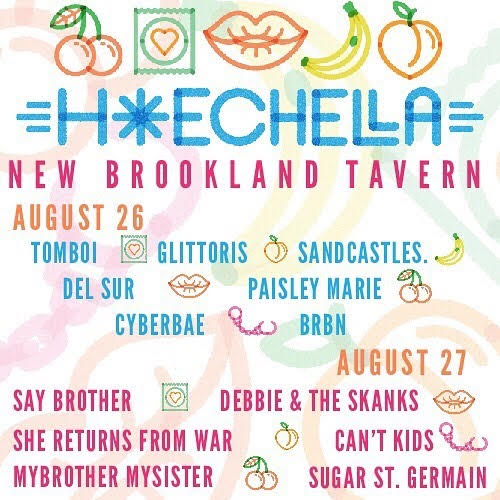 Next month a festival to raise awareness on body-positivity, called Hoechella, will run August 26-27 at New Brookland Tavern. The festival, organized by local musician and stage actor/director, Kari Lebby, was created to combat “slut shaming, rape culture, and unjust legislation that affects people's bodily autonomy.” This event will be completely free, thanks to Girls Rock Columbia and Girls Rock Charleston, who procured funding for the event, Lebby says.
Next month a festival to raise awareness on body-positivity, called Hoechella, will run August 26-27 at New Brookland Tavern. The festival, organized by local musician and stage actor/director, Kari Lebby, was created to combat “slut shaming, rape culture, and unjust legislation that affects people's bodily autonomy.” This event will be completely free, thanks to Girls Rock Columbia and Girls Rock Charleston, who procured funding for the event, Lebby says.
The decision to throw this event came from a desire to subvert the idea that expressing ones sexuality should be shamed and made to be a bad thing. “It isn’t a bad thing,” Lebby says. “What is a bad thing, however, is the marginalization of women, people of color, and queer people.” By holding this event, they wish to bring artists and leaders from these communities together for visibility and to encourage everyone to be comfortable with who they are, and to be informed about issues that affect us all.
The festival will feature local and regional acts, almost all of them including at least one member who is queer, a woman, or a person of color, according to Lebby. Debbie and the Skanks, Cyberbae, MyBrother MySister, Glittoris, and Can’t Kids will be performing, just to name a few. They cover a wide range of genres, which was another important factor in booking. This is to showcase diverse acts and to hopefully bridge some of the gaps in our ranging music scene.
Hoechella became a fully-realized festival in what seemed like no time at all, but that was not without the help from people and organizations in our community. “I just have crazy ideas, but it takes a ton of people to make it happen!” Lebby says about seeing Hoechella come to fruition. People from the organizations Girls Rock Columbia and Girls Rock Charleston, along with the staff at New Brookland Tavern helped to solidify their plan, while others helped with things like the organizing and designing of the logo.
Lebby hopes this event will encourage people to start speaking out against rape culture, body shaming, slut shaming, and unjust legislation. It will hopefully add a new spin on the typical shows we see here in Columbia, with added awareness and encouragement to be comfortable with one’s self and their personal choices.
For more information, check out Hoechella.org.
Full list of performers
Can't Kids, Say Brother, Debbie & the Skanks, MyBrother MySister, She Returns from War, Glittoris, Sandcastles, Paisley Marie, Del Sur, Cyberbae, BRBN, and Sugar St. Germain.
6 SONGS FOR SUMMER, 2016 by Alex Smith
"It is happening...again..."
-The Giant in "Lonely Souls", episode 14 of TWIN PEAKS
Eight months is a blink of an eye these days. I used to call songs like these "prescient". Now I just think of them as reminders I can shake my ass or slow dance to, but reminders, nonetheless, that we're not learning anything from history. And these days, history keeps getting closer and closer...
Listen to these songs. Shake your ass. Slow dance. But LISTEN. If they don't seem topical right now, just wait until it is happening again. Because it will.
One
David Bowie - "It's No Game (Part 2)" from the 1980 album SCARY MONSTERS (AND SUPERCREEPS)
"I am barred/from the event/I really don't understand this situation/so where's the moral?/People get their fingers broken/to be insulted by these fascists is so degrading...."
Two
The Clash - "English Civil War (live)" outtake from the film RUDE BOY
"It's still at the stage of clubs and fists/hurrah....hurrah/a well known face got beat to bits/hurrah...."
Three
Rolling Stones - "Street Fighting Man" from the 1968 album BEGGARS BANQUET
"Everywhere I hear the sound of marching charging feet, boy/'cause summer's here and the time is right for fighting in the street, boy...."
Four
Stevie Wonder - "Big Brother" from the 1972 album TALKING BOOK
"My name is secluded/we live in a house the size of a matchbox/roaches live with us wall to wall/you've killed all our leaders/I don't even have to do nothing to you/you'll cause your own country to fall...."
Five
John Lennon/Plastic Ono Band - "Woman Is The Nigger Of The World" from the 1975 album SHAVED FISH
"If you don't believe me take a look at the one you're with...."
Six
Nina Simone - "Ne Me Quitte Pas" written by Jacques Brel, from the 1965 album DON'T LET ME BE MISUNDERSTOOD
This song was my sole response on social media after the terrorist attack in France. Eight months ago.
Girls Rock Columbia Rock Concert Announced - 20 Bands!
Girls Rock Columbia Campers Conclude Fourth Year of Camp with Rock Concert 20 bands comprised of 77 8-17 year olds take the stage Columbia, S.C.
Girls Rock Columbia campers from two sessions will let their confidence shine at a showcase this Saturday at Columbia Museum of Art. The showcase will last from 3pm until 5pm and the doors open at 2pm.
The camp, which concludes its fourth year of camp on Friday, extended its programming to two weeks this year. The first week of programming catered exclusively to teenagers and those teenagers applied what they learned as junior counsellors during the second camp session, for campers 8-12. In addition to learning a traditional rock instrument and writing a song, campers also participate in band coaching, and workshops; Audio Console Mixing, Stage Presence, Herstory of Women in Rock, Body Positivity, Building a Pedalboard, Rock Photography and Zine Making.
“Too often people look at youth as having the potential to be something powerful someday,” said Mollie Williamson, executive director, “but at Girls Rock Columbia we think it’s important to recognize that these kids are change makers today. They are brave, powerful and changing the word right now. It’s really incredible to see them recognize that in themselves over the span of five days. Kids who are too shy to speak into a mic the first day are playing drum solos and screaming out lyrics by the end of camp. Being a part of helping these youth recognize their potential for making positive long lasting changes in the community is something that I feel so proud to be involved with. These are a generation of kids who are going to change the world.”
In its fourth year of operation, Girls Rock Columbia has more than quadrupled in size. Girls Rock Columbia is a non-profit organization dedicated to fostering a community of girls, trans* and non-binary youth in Columbia and empowering them through music education. The program encourages an environment that cultivates self-confidence, challenges gender stereotypes, promotes positive relationships, creativity, and leadership. The ultimate goal of Girls Rock Columbia is to empower everyone involved; both campers and volunteers, to take the sense of community learned from within the organization and carry that throughout the city they call home.
Admission to the showcase is $10 for adults and $5 for kids under 12. Children 3 and under are free. Doors open at 2pm. For more information about Girls Rock Columbia, please visit www.girlsrockcolumbia.org or follow on Twitter and Facebook.
Review: Green Room by Ony Ratsimbaharison
"Green Room is the manifestation of my worst fears on tour." -- Ony Ratsimbaharison, who is about to go on tour
An unsuccessful tour takes a turn for the worst in Green Room (2016), a horror film by director Jeremy Saulnier, about members of a punk band forced to fight for their lives against a group of white supremacists in a remote part of Oregon. It’s an overall good film with the right mix of punk, gore, and suspense.
The Ain’t Rights, a band made up of Sam (Alia Shawkat), Pat (Anton Yelchin), Reece (Joe Cole), and Tiger (Callum Turner), are struggling to finish their tour with barely any money. They are offered a last-minute show when a careless booker promises they’ll get paid well. They are, however, warned that they’ll be playing for Neo-Nazis, so they should be cautious and avoid talking politics. After their set, they and another young punk (Imogen Poots) witness a violent crime and are soon fighting to make it out of there alive.
The gory and suspenseful unfolding of events is gut-wrenching, and at times it feels almost too real. And just when you think it couldn’t get any worse, it does. This is not for the faint of heart, but there are instances of dark comedic relief and cinematic beauty. The subject matter is intense, though, there are pretty violent deaths.
The first half is accompanied by the muffled sounds of live heavy metal/grindcore playing in the background, as they discover that the Neo-Nazis are not only trying to cover up for their crime, but they’re setting the band up in the process. As the band struggles to get out, the skinheads become more hostile and violent towards them. Patrick Stewart plays Darcy, the leader of the white supremacist group and owner of the club.
The actors give stunning performances in this film, which came out in April of this year. The original soundtrack, provided by Brooke Blair and Will Blair, is heavy and brash, off-set by the occasional ambient interludes. It also includes a couple songs played by the fictional band featured in the film. The dynamics of the band also seemed more accurate than most depictions of young musicians.
Green Room is the manifestation of my worst fears on tour. Going 90 miles out of your route to play a virtually non-existent show and making close to nothing from it is a nightmare of its own. To then get sent to a play for a bunch of skinheads adds to the horror. The band is soon forced to use guns and anything else they can find to fight the Nazis.
The film has a good mix of suspense and horror, not too heavy on the gore but it is pretty bloody. The fact that this could legitimately happen of course adds to the scariness. I would recommend this movie to anyone about to go on tour (if you dare), or anyone who likes horror or has ever dreamed of covering the Dead Kennedys’ “Nazi Punks Fuck Off” to a room full of skinheads.
Jasper intern and blogger Ony Ratsimbaharison sets out this week on her own performance tour with her band FKMT.
Susan Felleman and Kristin Morris Talk with Jasper about the Bechdel Test & Women in Film by Mary Catherine Ballou
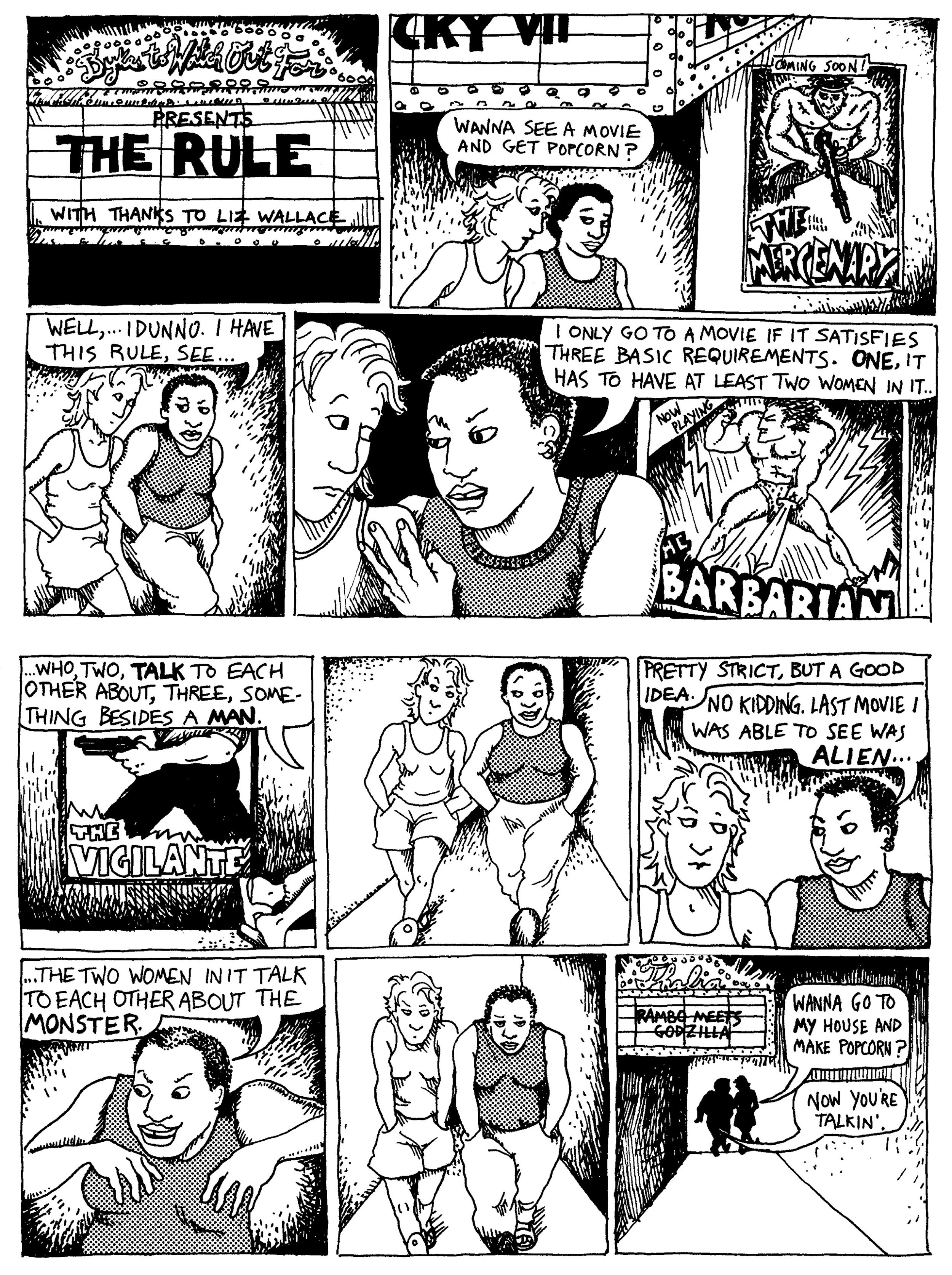 The Bechdel-Wallace Test, also known as the Bechdel Test, emerged out of the 1985 comic strip by Alison Bechdel entitled “The Rule.” In order for a film to pass the Bechdel test, it must satisfy three rules:
The Bechdel-Wallace Test, also known as the Bechdel Test, emerged out of the 1985 comic strip by Alison Bechdel entitled “The Rule.” In order for a film to pass the Bechdel test, it must satisfy three rules:
- There must be two female characters
- Who have a conversation with each other
- About something other than a man
At first glance, these may seem like simple stipulations for a film to meet. Yet, many films surprisingly do not pass this test. According to a study completed by Walter Hickey of FiveThirtyEight.com, “In a larger sample of 1,794 movies released from 1970 to 2013, we found that only half had at least one scene in which women talked to each other about something other than a man.” In light of this statistic, it remains imperative to realize that the Bechdel Test does not provide a definitive measure of a film’s overall worth. For instance, some films do not pass the test but they still portray strong female characters. For example, the movies that comprise The Lord of The Rings trilogy do not pass the Bechdel Test; however, each of the films showcase powerful female characters such as the elves Galadriel and Arwen, played by Cate Blanchett and Liv Tyler, respectively. On the other hand, some films that might be interpreted as vapid or sexist, such as this summer’s Mike and Dave Need Wedding Dates (released July 8, 2016), manage to pass the Bechdel Test.
Despite these variables concerning which films pass, the Bechdel Test still reveals an inherent bias against women in film. While the Bechdel Test is certainly not a conclusive source for judging film quality, it reinforces deeper implications like the ingrained prejudice against women in our culture and the sexist stigma prevalent in the film industry today. While it may not provide a comprehensive measurement of film quality, the test still provides insight into the bias displayed against females on screen. Moreover, it sheds light on subliminal messages frequently espoused by the media that relegate women to demeaning roles. We must acknowledge these subconscious messages that perpetuate cultural and sexist stereotypes.
As with any struggle, there are ups and downs in the progress towards gender equality on screen. Nonetheless, female actors seem to be making strides, as demonstrated by some recent summer releases that feature female leads and pass the Bechdel Test. Such films include The Shallows and Ghostbusters. Starring Blake Lively, The Shallows (released June 24, 2016) tells the story of a woman attacked by a shark who must fight for her life while stranded on a rocky outcrop. The Shallows contains more depth than one may initially expect before viewing – Blake Lively’s character acts as an instrument of her own fate, and she succeeds in an impressive way. Even though a male figure appears at the end of the film, he does not act as her savior – she survives due to her own actions, instincts, and will to live. Moreover, the female-dominated cast of the new Ghostbusters (released July 15, 2016) demonstrates a step in a more gender-equal direction within the realm of blockbuster films.
Even so, it remains difficult to gauge the full extent and future of women’s progress on screen, due to the perpetuation of male-centric films, and because the Bechdel Test does not provide a complete measure of a film’s inherent feminism. If nothing else, the test serves as an intriguing surface-level assessment that evaluates on-screen gender disparities and the roles portrayed by women in our male-dominated culture. Clearly, it suggests a rampant and inherent misogyny bred within the movie industry. Of course, many differences between the sexes are to be celebrated; yet, misogyny remains something that females must contend with in both private and public spheres, on and off the screen.
With these thoughts in mind, two local Columbia professionals, Susan Felleman and Kristin Morris, kindly agreed to be interviewed and share their thoughts regarding the Bechdel Test and the state of feminism in film today. Each of their answers provides insight into this culturally and historically relevant topic that cannot be ignored. Their interviews appear below:
~~~~~
Jasper: How did you first learn about the Bechdel-Wallace test?
Felleman: I am not really sure when I first heard of what was then referred to as the Bechdel test, probably in the late 2000s and possibly from Anita Sarkeesian’s “Feminist Frequency” blog and video series. https://www.youtube.com/watch?v=bLF6sAAMb4s
What was your initial reaction to the Test Requirements?
I guess I found it a useful tool, less for judging films than for getting students to see and think about the sexist conventions of movie stories. At the time I was teaching in a film program.
Do you find any downsides or shortcomings to the Bechdel-Wallace Test?
Of course, if it’s applied programmatically, which it shouldn’t be, as its origins are to be found in a couple frames of a comic strip. As Anita Sarkeesian notes, passing the test doesn’t make a film feminist, or even good. Conversely, it’s possible for a good film to fail the test, even a feminist one! For instance, I noticed that one of my favorite films, one I often teach, Sally Potter’s vanguard and gender-bending film Orlando (1992)—written and directed by a feminist filmmaker; and adapted from a feminist novel by Virginia Woolf—cannot pass the test.
Do you think the Test provides a helpful analysis of female roles in films?
No, not really. It’s more descriptive than analytical.
What are your general thoughts regarding the current state of feminism/female roles in films today?
Oy! Sometimes it seems that the more things change, the more they stay the same. As with filmmakers of color, women have made very slow inroads into mainstream film production as writers, producers, cinematographers, or directors. And, as with people of color and other minorities, the representation of women in commercial film tends to suffer from grievous bias, as well as tokenism. Women are still by and large treated as objects by an exceedingly conventional popular cinema, even in the occasional film in which they are permitted agency.
Things are a little better in independent and some global cinema, and considerably better in documentary filmmaking. And this new golden age of television has been remarkable for women, on both sides of the camera, although television, too, remains male dominated. I’ve noticed for a couple decades now that many women directors who’d had one or two breakthrough independent films but had fallen from view in Hollywood were increasingly turning up in TV credits. The fragmentation of the audience in the current TV environment has allowed for such noteworthy developments as the success of Shonda Rhimes and Netflix’s original shows like Orange is the New Black, Master of None, and Unbreakable Kimmy Schmidt (three series I enjoy!). That said, one mustn’t forget the added prestige and capital invested in shows with a more typical institutional imprimatur, like The Wire, The Sopranos, Breaking Bad, Mad Men, etc.
~~~~~
Jasper: How did you first learn about the Bechdel-Wallace test?
Morris: I can't remember the exact moment I first heard of the test, but I'd guess about 7 or 8 years ago? I've only ever heard it referenced as the 'Bechdel Test.'
What was your initial reaction to the Test Requirements?
Initially I think everyone jumps right into seeing if any of your favorite films meet the criteria - and quickly realizing that so many big commercial films don't.
Do you find any downsides or shortcomings to the Bechdel-Wallace Test?
I think it’s a first step, but there are films I wouldn't necessarily consider 'pro-woman' that would meet the criteria. I remember reading an article how the film Sucker Punch passed the Bechdel Test, even though its arguably adolescent boy fantasy that objectifies young women. I also think that feminist thought has developed beyond the simplicity of the Bechdel test. Race, culture, gender identity, nor sexual orientation are addressed, which are all big parts of the feminist conversation we're having now.
I read a few years ago that Alison Bechdel actually came up with the criteria as a joke in a comic she wrote -- so I don't think it's initial intention was to be taken as a standard for feminist films. It was framed as the most baseline measurement that could still rarely be met. That's so sad you have to laugh at it, I guess?!
Do you think the Test provides a helpful analysis of female roles in films?
Not really. If you go through the list of films that pass the test I don't think you'd see them having strong female characters with interesting and complex relationships. For example, here are some of the films that have been released this year that pass the test: Batman vs. Superman, The Purge: Election Year, Captain America: Civil War, and Warcraft. While these big budget movies technically meet the Bechdel criteria, none of these are primarily representing women.
What are your general thoughts regarding the current state of feminism/female roles in films today? I think the focus on women in film is expanding from acting to include directing, writing, producing, and crews. If you're ignoring all of the creative process before there's an actress on a movie screen, you're missing 90% of the process. Outside of the film world, we're looking at representation and who's making decisions. Governments and corporations are intentionally bringing more women on as cabinet members, executives and board members.
In 2015, women accounted for 9% of directors, up 2 percentage points from 2014 but even with the figure from 1998. In other roles, women comprised 11% of writers, 26% of producers, 20% of executive producers, 22% of editors, and 6% of cinematographers (http://womenintvfilm.sdsu.edu/research/). If we had more women at the writing table and behind the cameras there wouldn't be a need for tests like the Bechdel Test - maybe?
A lot of the work we do at the Nick is featuring filmmakers from marginalized groups. I'm working on a festival in November celebrating the 25th anniversary of the film Daughters of the Dust, which was the first film made by a woman of color to receive national distribution. We've invited 8 emerging female filmmakers of color to come to Columbia and exhibit their work and have conversations about their experiences as young women of color in the film industry. There's more info about the project here: http://nickelodeon.org/festivals/daughters/
--Mary Catherine Ballou is an intern writing for Jasper Magazine.
Fall Lines – a literary convergence launches third issue with a reception and reading at Tapp’s Arts Center July 28th
The Columbia Fall Line is a natural junction, along which the Congaree River falls and rapids form, running parallel to the east coast of the country between the resilient rocks of the Appalachians and the softer, more gentle coastal plain.
Jasper Magazine, in partnership with Richland Library, USC Press, One Columbia, Muddy Ford Press, and The Jasper Project will release the third annual issue of Fall Lines – a literary convergence on Thursday, July 28th from 7 – 9 pm at a free reception at Tapp’s Arts Center. An annual literary journal based in Columbia, SC, Fall Lines was conceived as a mechanism for highlighting Columbia as the literary arts capitol of South Carolina.
A panel of judges selected 30 pieces of poetry and prose, from hundreds of international submissions, for publication in Fall Lines alongside invited pieces from Ron Rash, Terrance Hayes, Pam Durban, Laurel Blossom, and Patricia Moore-Pastides. Two prizes for the literary arts, sponsored by Friends of the Richland Library, will also be awarded including the Saluda River Prize for Poetry to Kathleen Nalley for her poem, “The Last Man on the Moon,” and the Broad River Prize for Prose, awarded to Claire Kemp for her short fiction, “The Dollmaker.” Adjudicators included SC poet laureate Marjory Wentworth and award-winning author Julia Elliott. In addition, Fall Lines will also publish the winner of the 2016 South Carolina Academy of Authors Coker Fiction Fellowship, “I Can’t Remember What I Was Trying to Forget,” by Phillip Gardner.
The awards ceremony and reception will also feature readings by selected authors whose work is published in this issue of Fall Lines: Scott Chalupa, David Travis Bland, Matthew O’Leary, Mike Miller, Claire Kemp, Kathleen Nalley. Tim Conroy, Julie Bloemeke, Eileen Scharenbroch, Jonathan Butler, and Mark Rodehorst.
The editors of Fall Lines, Cindi Boiter, Ed Madden, and Kyle Petersen, are deeply appreciative of this year’s sponsors including Jonathan and Lorene Haupt, Sara June Goldstein, Richland Library, One Columbia for Arts and History, Muddy Ford Press, Columbia Museum of Art, the SC Philharmonic Orchestra, Rosewood Art and Music Festival, Deckle Edge Literary Festival 2017, and The Whig.
For more information please contact Cindi Boiter at cindiboiter@gmail.com.
Summer 6s - Al Black Chooses his 6 Favorite Summer Reads

According to poet and poetry guru Al Black, "It was difficult to choose six books that are my favorites, because tomorrow I would choose differently. I chose based upon how the books resonated with and within me and how they still resonate with and within me; the list comes the residue left in my gut and in my dreams."
These are words that we think ring true for most of us.
What are your 6 favorite summer reads?
Transformations - Anne Sexton
I had read a poem or two of her work, but when I read 'Transformations' I came away shaking. Here were poems that saw beneath the superficiality of fairy tales and saw the truth of the tortured souls the main protagonists were and in knowing them I knew more about the people around me and myself. This book of poetry still has the ability to show me something new about Anne, other human beings and myself - I pick it up every few years and reread it.
~~~
At Play in the Fields of the Lord - Peter Matthieson
Peter Matthieson is an under-appreciated American author; all of his works are unique and compelling reads. I read 'At Play in the Fields of the Lord' at a time when I was going through major life changes and this novel spoke to me in ways that goes beyond the printed page. Great story and great questions. Beware the movie made from the book was awful.
~~~
Grapes of Wrath - John Steinbeck
Dear John , I wish I could of sat, shared a smoke, a cup of coffee and talked with you. Al
'Tortilla Flat' and 'Cannery Row' were small bits of revelation, but 'Grapes of Wrath' came down from Mount Sinai still crackling with thunder. The description of banks and corporations recreated me as a left-leaning humanist and Tom Joad's, short soliloquy saying good bye to his mother, pushed me onto a path of social activism armed with only a shovel.
~~~
Narcissus and Goldmund - Hermann Hesse
I have read all of Hesse's novels and poems. 'Narcissus and Goldmund' is small navel that can be read in one sitting it illustrates the duality that exists in each of us. This small novel helped me become painfully aware of my sensual & freedom seeking side and how it collides with my desire for contentment, peace and living a spiritual life. Precisely at that point of collision is where I am most alive. This book, as with most of Hesse's books, is a story of the different major aspects of his personality personified in the characters of the story as they work through the questions they pose to one another. Great read.
~~~
Memories, Dreams and Reflections - C. G. Jung as told to Aniela Jaffe
I first became interested in Dr. Jung because of his close friendship with and mutual admiration of Hermann Hesse. Memories, Dreams and Reflections is Jung's telling his life story, but not in a chronology; in this book I learned who C. G, Jung was and in knowing Jung I learned that I am not a chronology of events either, but rather a personification of my memories, dreams and reflections and that these may be more real now that when they occurred decades ago.
~~~
The Invisible Man - Ralph Ellison
Ralph Ellison was a black writer of the mid-20th century who changed American literature's perception of what a novel can do and be. 'The Invisible Man' tells a story of black man as he journeys through America; it is at once funny, harsh, sardonic and full of suspense. It is one of the masterpieces of 20th century American literature - this should be on every high school reading list.
Note from Al: I look back at my list and realize that Anne Sexton is the only woman writer on this list - I don't know what this says of me, but I will take note and ponder why and maybe learn from it. A.B.

Orangeburg County Fine Arts Center presents -- Observation: An exhibition of drawings and paintings by five artists who work from life: Allan Anderson, Michael Cassidy, Blake Morgan, Anna Redwine, JohnHenry Tecklenberg
 Where: Orangeburg County Fine Arts Center 649 Riverside Drive, Orangeburg, SC
Where: Orangeburg County Fine Arts Center 649 Riverside Drive, Orangeburg, SC
In today’s world we’re numbed by images that are reproduced exponentially; we look at screens, and photocopies, and magazines. We also observe real things in our daily routines landscapes, people, objects, animals and dismiss them without a second thought. How, then, do we connect with nature, find meaning in the small objects in our lives, and make sense of the movement and change in the world around us?
These five artists use direct observation to commune with their subject matter, respond to the passage of time, and harness the vigor of life. Each picture in the exhibition was created deliberately through observation. The artists share a commitment to working from life and immerse themselves in their subject matter. The resulting images are unique documents of that experience.
“Observational painting is a way for me to engage nature. You are immersed in the landscape and in time and with the passage of time the landscape changes. For me, this is an opportunity to search for moments that will allow me to connect the picture together and sort through abstract ideas I have about painting.”
Blake Morgan
“I paint from observation because of a need to know the world more carefully and closely. I choose things that I find some sort of interest or meaning in. Many of the things I select to paint are a part of my everyday life. I place the subject in the studio and sit with it and try to get to know it. I witness the changes that a thing may go through and capture the most interesting stages. Poet Mark Strand said, “It’s such a lucky accident having been born, that we are obliged to pay attention” and further on he states “Most of our experience is that of being a witness. We see and hear and smell other things. I think being alive is responding.” (From Creativity: the Psychology of Discovery and Invention by Mihaly Csikszentmihalyi) Susan Sontag takes it one step further; “To be a moral human being is to pay, certain kinds of attention.” My small paintings are my response to being alive.”
Michael Cassidy
“For me, art is the process of translating the life of another living thing through my own experience of observation. Drawing from life is therefore a critical aspect of my creative process. I think of drawing as extracting, more than just markmaking. If I tried to extract life from a secondary source, it just wouldn’t work. I have to watch my subject in order to understand what it feels like to be my subject, then I endeavor to share that through markmaking. Drawing from life is about empathy.”
Anna Redwine
“I believe observational painting is a journey into the very essence of communing with what one is attempting to represent, where it may take untold hours of looking at a stilllife or figure to understand what one is painting and seeing. My practice revolves around painting from life the figure, the landscape, and stilllife.”
JohnHenry Tecklenberg
“Working from life allows you to immerse yourself in the experience of the painting. Not only are you observing the subject in its physical setting, you are also recording it through a passage of time. You get to know the subject you are working on and begin to see new things as the time passes. I predominantly work from the landscape. In that environment you are exposed to all of natures elements. The arrangement of objects and relationships are constantly changing as the sun and light is always moving. It is up to the artist to pick and choose certain key elements as they move in order to develop a stronger composition. There is something about being in the same light and the same environment as the subject you are painting. Nothing beats the true color and value shifts that you can see when working from life. It allows you to see the space in its natural state and for you to depict the space how you perceive it. If you submit yourself to the subject, it sparks a deeper feeling of meditation.”
Allan Anderson
CONTACT: Michael Cassidy cassidypainting@gmail.com
Haiku Death Match, or Learning about Creativity with Middle School Writers at Tri-DAC by Ed Madden
This afternoon, it’s round two of Haiku Death Match. The topics are deodorant and cheese. The first round included haiku on Beyoncé and the beard of Darien Cavanaugh, one of the writing instructors. The instructors write all sorts of topics on strips of paper—not just deodorant and cheese but French fries, love, bad smells, puppies. These topics are drawn from a bucket. The teams have 2 minutes to write. They have given themselves team names—the Argonauts, NerdHerd 3.0, the Curators, Tomatoes. When time is called, someone from each team reads the haiku aloud—twice—for the judges.
Right, judges. First there is the Panel of Death, a collection of mostly older students, who vote on the haiku. Someone inevitably brings up questions of accuracy: what was the syllable count? how many syllables in “easily”? One reader explains that when he read: “Odor: / say your prayers now,” “Odor” was the end of the second line. Someone else shouts out: “That’s enjambment!” (Yes! They got the lesson on line breaks in poetry!)
If there is a tie, the decision goes to the Titans (the instructors). And if there’s a tie among the Titans, well, bring out the Kraken—i.e. fiction instructor Cavanaugh, who will roar appropriately then vote thumbs up or thumbs down. “Kra-ken! Kra-ken! Kra-ken!” they chant.
At some point, we usually ask that the haiku be sung. For clarity, of course.
~
At the Tri-District Arts Consortium, or Tri-DAC, I’m teaching creative writing along with a staff that continually amazes me and makes me laugh. (And luckily, someone is usually ready to make a coffee run when it’s the needful thing.) The three-week summer program includes music, theatre, dance, visual arts, and creative writing. Students audition to participate. In creative writing we have about 50 lively and engaged students, rising 6th graders to rising 9th graders, some who have been here all four years.
In the Creative Writing Program (see our website here), practicing South Carolina writers teach essentials of creative writing from page to stage with exercises that promote creative development, revision, and performance. Along the way, students learn more than just how to become better writers—they also develop skills in effective communication, empathy, teamwork, and confidence.
Students in creative writing this year are taking poetry classes with me and with Betsy Breen, a poet who teaches at Hammond School; prose classes with Darien Cavanaugh, named the Jasper Artist of the Year a few years ago after he founded the Columbia Broadside Project; and classes in flash fiction and memoir with visiting artists Justin Brouckaert, a recent USC MFA graduate; and Carl Jenkinson, who teaches writing now at the Moore School of Business. Past instructors and guest artists have included: Will Garland, Lindsay Green-McManus, Jonathan Maricle, Wendy Ralph, and Mark Sibley-Jones (who now teaches at the SC Governor’s School for the Arts). The whole endeavor is directed by Ray McManus, a poet on faculty at USC-Sumter who has an extraordinary ability to hold the attention of 50 rowdy middle schoolers. Haiku Death Match was his idea for the late afternoons in the last week, when the instructors are getting a little punchy and the students are at their giddiest. After two rigorous weeks of classes and daily writing activities, it’s a fun group activity that is collaborative and, despite the silliness, one that has students thinking about what makes a poem good, what makes a poem work.
~
Dr. Ray’s 8-10 Rules of Writing
- Do not ask yourself if you should disturb the universe. Instead ask yourself how.
- Rhyme is fine some of the time, but mostly it’s stupid.
- Editing is not the same as revising.
- No senseless writing.
- There is no such thing as writer’s block. There is no such thing as writer’s block. There is no such thing as writer’s block.
- When in doubt, say something outrageous.
- Typing is not writing.
- In writing there is no right or wrong, there is only weak or strong.
The students know these rules. They can recite them. In unison. With enthusiasm.
~
Some of us have been working with Tri-DAC for years, some for the first time this year—but every year is really a first time, as we learn to work with each other and with a range of new and returning students, adapting our exercises to what other instructors are doing, and maybe trying to emphasize lessons students are learning in other classes. (Besides, if we reuse an exercise, returning students will let us know: “we did that last year!”)
Along with my class, my job the past few years has been the mini-showcase, a performance that falls at the end of the second week. Each art discipline performs during the showcase, usually highlighting their oldest students, especially the four-year students. I’ve tried to create choral projects, where the students’ voices echo and converse with each other around a central theme or set of prompts. One year we did prayers and curses. (The entire audience moaned when one writer said, “May there be no presents under your tree.”) One year it was a medley of poems about what we keep and how we worship, responding to poems by Naomi Shihab Nye (“Different Ways to Pray”) and Carlos Drummond De Andrade (“The Elephant”).
This year the students read two poems from Welsh poet Jonathan Edwards’ lovely book, My Family and Other Superheroes—“My Family in a Human Pyramid,” in which Edwards imagines his family building an impossible human pyramid, with his diapered godson teetering on top of his head, and “Building My Grandfather,” in which he imagines building his grandfather, one piece, and one story at a time. (Read more about Edwards’ poetry here and here.) So we began to imagine our families as soccer teams and cheerleading squads, as the cast of a play or the staff of NASA (with Grandma flying to the moon with her dogs, because she never goes anywhere without them). And we, too, began to imagine building our grandparents, one piece, and one story at a time.
Here’s “Building My Grandmother” by Zach Frueauf, a rising 8th grader at Carolina Springs Middle School.
Building My Grandmother
by Zach Frueauf
We buy parts with the fifty dollars she gave me for my birthday.
We put her together steadily until we get to the knees,
they are rusty because she has done so much farm work.
We fill her lungs with the smoke she has inhaled from cigarettes.
We fill her heart with a new husband
to make up for the ones she had lost in the past.
We fill her brain with the music of her guitar,
and we put her hands on with care so she can play it.
In Breen’s class, the young writers wrote startlingly rich poems about places they’d been after reading South Carolina poet Terrance Hayes’s “New York Poem” (lightly edited for middle school students), and they produced amazing mythic versions of their own births after reading Alma Luz Villaneuva’s “Indian Summer Ritual.” (One of our twin writers, Isaac Hill, wrote, in one of the loveliest birth poems, “I let Joe go first / He kicked me in the head. / It left no mark.”) They also learned about showing not telling, about the value of specificity, while writing poems after reading Edward Hirsch’s “Cotton Candy.” Breen asked them to write a poem about the last time they saw someone that they care about—“someone you haven’t seen in a long time.”
Here’s “Sharing a Coke” by Mara Lind, a rising 9th grader from River Bluff High School.
Sharing a Coke
by Mara Lind
I didn’t recognize you,
with a black shirt, dirty hair, and stubble.
You opened a coke but didn’t offer me one,
so I got my own,
sipping slowly.
Someone brought a radio and
the uncles danced with aunts.
My drink fizzed warm in my
stomach while we hid behind
hay stacks. You didn’t talk much.
I asked about school and
you answered.
When saying goodbye,
I had to stand tall to hug you,
and the pop tab fell between my fingers.
Cavanaugh gets the students to create their own biographies based on a poem by George Ella Lyon, “Where I’m From,” as well as wacky little nonfiction pieces based on comedian Sara Silverman’s “Two-Minute Index” featured on the sides of Chipotle cups in their “Cultivating Thought” series. These are crazy fun.
~
Two of the boys are always farting. One little girl has the whiniest voice I’ve ever heard, almost like fingernails on a chalkboard. If we don’t marshal them into Haiku Death Match, the room can devolve into arm-wrestling and discussions of how to talk like Yoda. Matthew wants to show us card tricks. Samantha drew a picture of me. Trevor tried to explain Pokemon Go to me. One day Scott brought his entire library of Animorphs books. On birthdays, we often have cupcakes.
It’s exhausting and exhilarating and every year I leave so thrilled to have been part of it.
And Friday night, July 15, we’ll have our final program. The music and creative writing programs will perform together at 6:30 at the Lexington One Performing Arts Center. Theatre and dance and visual arts have their final performances and presentations Saturday at Richland Northeast High School.
TriDAC is in its 31st year, the creative writing program in its 21st, the last 11 directed by McManus To find out more about the creative writing program at Tri-DAC, check our website at www.cwtridac.com.




